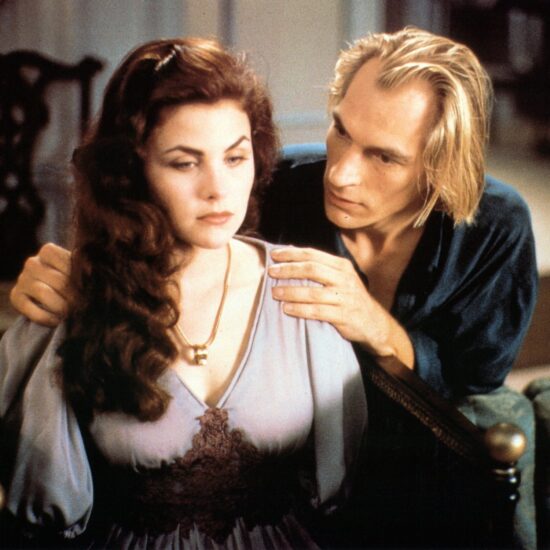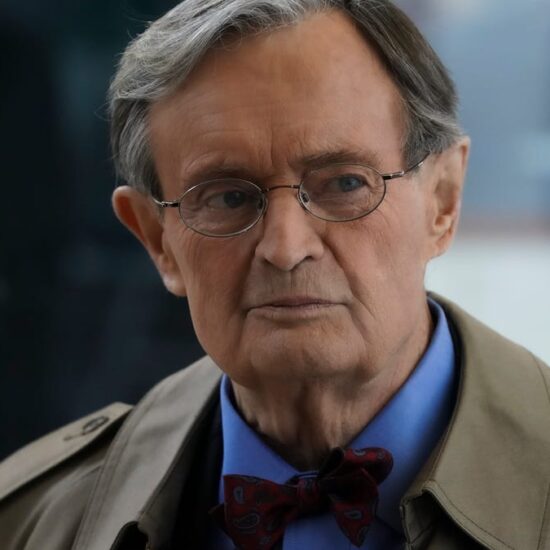
The IndieWire staff pick five of the film and TV compositions that will forever transport us to a place where the birds sing a pretty song, and there’s always music in the air.
Composer Angelo Badalamenti has died, leaving behind a musical legacy that spanned ’80s slashers, holiday season slapstick, and, of course, his long running creative partnership with director David Lynch. In memory of the man who collaborated with a Beatle and Bowie and was responsible for so much of the unmistakable mood of the Lynch filmography, the IndieWire staff picked five of the film and TV compositions that will forever transport us to a place where the birds sing a pretty song, and there’s always music in the air.
“Blue Velvet,” “Main Title” (1986)
The first collaboration between Badalamenti and Lynch, “Blue Velvet” boasts a main title that sees the late composer wryly hinting at the devilish duplicity of Jeffrey Beaumont’s (Kyle MacLachlan) descent into a suburban underworld with characteristic brilliance.
Presented over a blue velvet curtain, with the embellished names of Isabella Rossellini, Dennis Hopper, and the rest of the singular cast fading in and out, the 1986 film’s opening is at first classic in its theatricality: robust, celebratory, safe. But as the orchestra swells and the warm brass builds atop a snowballing cascade of minor chords, Badalamenti introduces a vicious playfulness crystallized in the rest of the horror’s soundtrack. As the “Blue Velvet” main title slips into Bobby Vinton’s crooning take on the ’50s love song that gives the film its name, the literal and the ethereal collide at the dreamlike bedrock of what would become a decade-spanning collaboration. —Alison Foreman
“Twin Peaks,” “Laura Palmer’s Theme” (1990)
To hear Badalamenti tell it, “Laura Palmer’s Theme” flowed from his fingers while Lynch described the elemental imagery of his pioneering TV team-up with Mark Frost: trees, wind, an owl, the emergence of a lonely girl from the darkness. Given the way each section of the theme rolls into the next, it’s impossible to imagine it coming together any other way — just as it’s impossible to imagine a version of “Twin Peaks” without those ominously sustained chords, the modulations that feel like they could just keep building infinitely toward the heavens, and the cascading beauty and romance that sticks around for just a few short measures before the whole thing dissolves back into dread. It’s a versatile cue that underscored melodrama, terror, and the end credits throughout the show’s ABC run, and came back for a particularly poignant full-circle moment in its 2017 sequel. Things have a habit of repeating themselves in “Twin Peaks,” and “Laura Palmer’s Theme” portrays those cycles beautifully, forever fading between light and dark, never fully giving itself over to one or the other. —Erik Adams
“Twin Peaks: Fire Walk With Me,” “Theme from Twin Peaks – Fire Walk With Me” (1992)
The opening credits of 1992’s “Fire Walk with Me” — white, Lynchian, sans-serif lettering against the vibrating, bluish-white noise of television static — is essential to telling us what this prequel film is going to be. That is, total annihilation of the ABC broadcast version of “Twin Peaks” you’d cozily come to love. As the credits end, that TV set framing them is promptly smashed by a hammer, and a woman’s blood-curdling scream is heard out of view.
So begins “Fire Walk with Me,” in which audiences get to know what really happened to Laura Palmer. (It’s so much worse than you thought.) But it also begins with Badalamenti’s reinvention of the classic “Twin Peaks” theme, here a jazzy, lovelorn, Miles Davis-esque ballad with trumpet from Jim Hymes, slowed down to narcotized levels. It’s the sort of moody preamble you can imagine Laura, coked out in her bedroom or in sordid nightclub the Pink Room, vibing and writhing to in slow-motion. Musically speaking, “Twin Peaks” mainly exists in an electronic world, but punches of smoky jazz like this “theme” give a sense of Badalamenti’s real savvy for other genres — like much of his film music, this one stands on its own, outside of context, as a kind of uneasy listening. In context, however, it’s way more nightmarish. That oddly soothing sensation found within the inexorably awful and demonic defines Lynch’s body of work — white noise as nightmare — but that’s largely because of Badalamenti’s contributions. This one sticks in the mind: something horrible is coming, and it’s somehow calming. —Ryan Lattanzio
“The Beach” (2000)
Is “The Beach” an actual movie or is it a flimsy excuse to watch Leonardo DiCaprio, variously, hook up with Tilda Swinton and fight a shark? Who can really say. But there is a clarity and a lushness to Badalamenti’s score for this Danny Boyle directed/Alex Garland-penned adventure that feels quintessentially Hollywood at the turn of the millennium, a blend of thematic orchestrations with more atmospheric material that helps mark out the movie’s titular location as alluring and strange. Badalamenti leans on percussion and synths for the more unsettling aspects, but also employs echoing strings that feel as vast as a sunset in the more romantic moments. The score always matches the action onscreen, which means it’s often as goofy and taking big swings the way the movie is, but maybe even more successfully than the film itself, Badalamenti’s music always suggests that there’s something more going here, or some aspect of this place and these people still waiting to be discovered. —Sarah Shachat
“A Very Long Engagement” (2004)
Badalamenti might be more celebrated for the synth textures of his Lynch scores, but he operates with just as much precision when composing with a conventional orchestra in mind. Jean-Pierre Jeunet’s “A Very Long Engagement” is both a conventional movie and not at all, a love story bursting with the visual life and the kind of cheeky tangents that make “Amelie” so delightful, but also the film is set just after World War I and most of the characters introduced in the film’s opening are dead and everything is terrible. Badalamenti’s score perfectly captures the essential contradiction at the movie’s happy and sad heart. It’s somber in expected ways, with the mournful horns and swelling strings that seem to come standard issued with war pictures. But it’s also slyly curious and energetic in its rhythms and in the ways Badalamenti develops its themes. There’s a restless forward motion to it that makes the score feel different from a generic trudge through the trenches. The seven-minute end titles track is as good a primer as any for not just the depth but the nuance of feeling that Badalamenti could evoke with his music. That it also happens to be gorgeous is (and isn’t) a happy accident. —Sarah Shachat
Sign Up: Stay on top of the latest breaking film and TV news! Sign up for our Email Newsletters here.












